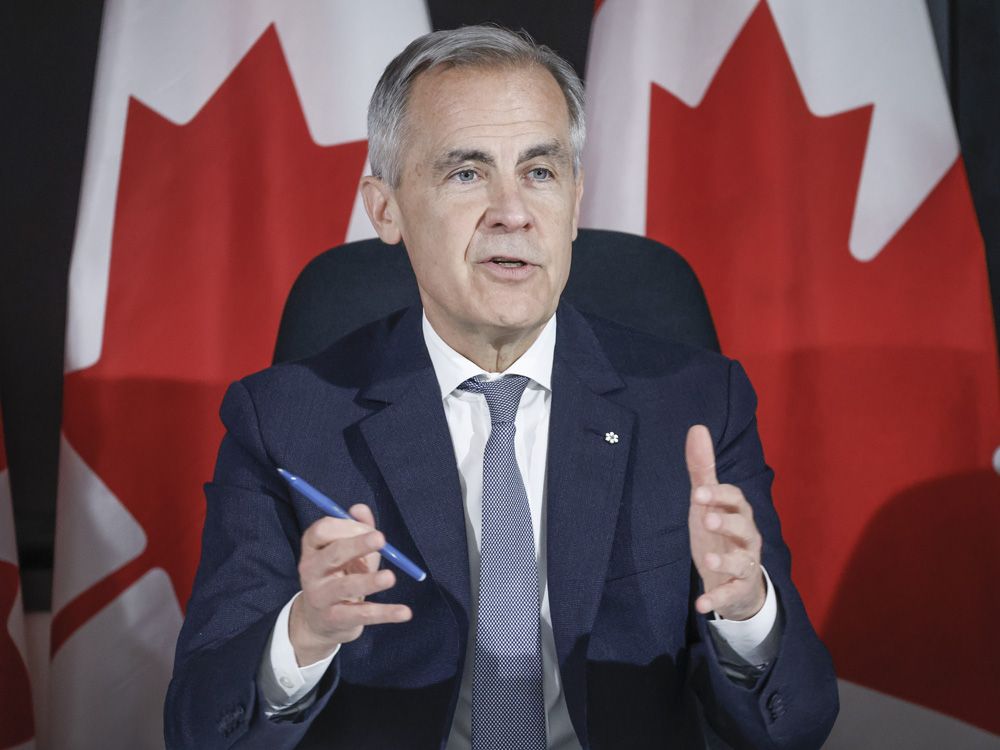
Canada’s population over the past nine years has grown 15.8 per cent and now tops 41.5 million, so you would expect the federal government’s expenditures to increase over that time period as well.
Although population growth is not perfectly correlated to expenditure growth — political ideology and spending commitments, rising interest rates , inflation and public sector wages are better correlated — it’s a decent metric to start with. I had a peek at the growth of such expenditures over the past nine years and the estimated ones for the year to come when the federal government’s 2025-2026 Expenditure Plan was released last week.
Ten years ago, the federal government expenditures were $250.1 billion. It’s dramatically increased since then and is estimated to be $486.9 billion for the 2025-26 year, which is an increase of $236.8 billion, or 94.7 per cent, in 10 years, and an 8.4 per cent increase from 2024-2025.
That incredible growth has far exceeded population growth and once again shows that other factors, such as political ideology, have a far greater influence on government expenditure growth. Our federal government has long had an infatuation with spending.
The 2025-2026 expenditure estimates are a bit of a dense read, yet few details are provided and the accounting methodologies deployed are not obvious.
For example, it appears as if the Canada Revenue Agency was going to have a $10.38-billion decrease in its current budget, or a 50 per cent cut from the prior year. “Wow, finally a step in the right direction,” I thought. “Perhaps the government is finally going to reduce some of the obvious bloat.”
But I was suspicious. There was no way the CRA would have a 50 per cent budget reduction. With the help of some excellent colleagues , we discovered that the CRA’s budget numbers include the amounts distributed as rebates for the consumer carbon tax .
With the carbon tax now at zero, such amounts will not be applicable for the upcoming year. Remove those amounts from the CRA’s budget and it turns out that the agency’s actual budget for the current fiscal year is pretty much the same as the previous year. Why the rebates are part of the CRA’s budget amounts is puzzling.
The message here is that you can’t accept the presented numbers as gospel truth since there are many instances when what you see is not reality. Thus, the importance of presenting a full budget. It is critically important for transparency and accountability.
The same applies to the plan by Prime Minister Mark Carney ‘s government to separate the operating budget from the capital budget. Such separation might present some useful information, but that kind of exercise is an old accounting trick deployed by many governments historically to mask overall spending.
The growth in federal revenues has not kept pace with the growth in federal expenditures, including debt charges on our rising federal debt. There is a deficit when such expenditures exceed revenues, and any deficit increases our overall debt, and with increasing debt comes increased public debt charges. It’s simple mathematics.
Using a simple analogy, if your income sources exceed your household expenditures, then you are going to have to borrow money to pay for such expenditures. If your borrowing source is, say, your credit card, then your balance continues to grow and your interest charges on the credit card debt continue to grow as well.
If your credit card debt gets to be too much to handle, then you will need to cut household expenditures or increase your income to pay it down. Likely, you’ll need to do both.
With governments, the situation needs to become pretty dire for them to take action since they are often worried about the political risks associated with expenditure cuts and/or tax increases. In the meantime, they’ll use many comparative figures, often comparing such figures with other countries, to justify their growing debt.
But it’s only a matter of time until taxation policy will be asked to play a greater role when government spending is structurally misaligned with revenues.
In this context, that means the introduction of new taxes , which could include increased personal and corporate tax rates — which would be a disaster and add to an already highly uncompetitive landscape on this front — increased GST/HST, new carbon taxes, the introduction of a wealth tax, a home equity tax, taxation on unrealized capital gains or a number of other more targeted ideas, such as excess profits taxes on certain industries, increased taxation on capital gains notwithstanding this 2024 proposal was recently abandoned, etc.
What we need is comprehensive tax reform. Not just an “ expert review ” of the corporate tax system that the Liberal Party promised during the late stages of the recent election campaign. With all the chaos that Canada is facing, it is critically important that our country’s finances are managed appropriately.
A good recipe would combine tax reform with significant and meaningful expenditure cuts, a commitment to increased transparency and accountability (for which a budget is a must-have) and measures to unleash the power of our resources and entrepreneurs.
Former United States Treasury Secretary William Simon once said, “The nation should have a tax system that looks like someone designed it on purpose.”
That quote resonates deeply in today’s environment. Canada doesn’t just need marginal tax rate tweaks or partisan half-measures. We need a purposeful, principled overhaul of our tax system — grounded in simplicity, competitiveness and fairness — paired with meaningful spending restraints and cuts and full transparency.
The tax hit to Canadians from Trump's 'big beautiful' bill could be tremendous Canada needs a full federal budget now to show where taxpayers' money is goingCombine that with a renewed confidence in our nation’s entrepreneurs and resource builders, and we can finally plant the acorns of good policy, ones that will grow into the oak tree of a proud, prosperous and sustainable country.
Kim Moody, FCPA, FCA, TEP, is the founder of Moodys Tax/Moodys Private Client, a former chair of the Canadian Tax Foundation, former chair of the Society of Estate Practitioners (Canada) and has held many other leadership positions in the Canadian tax community. He can be reached at [email protected] and his LinkedIn profile is https://www.linkedin.com/in/kimgcmoody.
_____________________________________________________________
If you like this story, sign up for the FP Investor Newsletter.
_____________________________________________________________
Bookmark our website and support our journalism: Don’t miss the business news you need to know — add financialpost.com to your bookmarks and sign up for our newsletters here.







.jpg.webp?itok=1zl_MpKg)





 Bengali (Bangladesh) ·
Bengali (Bangladesh) ·  English (United States) ·
English (United States) ·